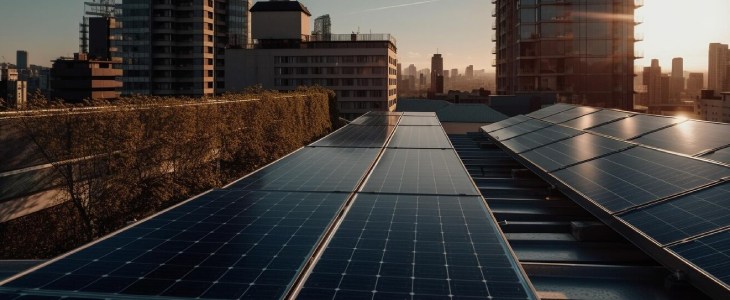Precinct design assessment: a guide to smart sustainable low carbon urban development
This guide has been developed to help speed a transition to sustainable urban development in two key environmental domains related to resource consumption and greenhouse gas emissions (GHGE) where levels of both are seriously challenging the planetary boundaries of a finite earth experiencing rapid population growth and urbanisation.
This requires an urban development transition that is demonstrably regenerative, low carbon, adaptive and smart and that will underpin the emergence of a green economy that has renewable energy at its core, but is multi-sectoral in its involvement with new modes of transport, construction, manufacturing and service industries.
It requires urban development that is based on a critical set of planning and design principles and objectives for cities capable of delivering the environmental outcomes listed above, as well as a set of co-benefits linked to human health and well-being. It encompasses a new urban design paradigm for city development and redevelopment that focusses on people, in contrast to previous eras when demands of manufacturing industries and automobile transport dominated metropolitan planning and its restrictive and prescriptive zoning practices. In the 21st century, jobs are attracted to those high amenity locations and neighbourhoods that are places where the skilled information, knowledge and creative workers want to live. Greater emphasis is required on place-making.

Urban development also needs to be based on smart decision-making and new urban governance models and practices that have a capacity to address the multiple objectives of 21st century city performance; that is, cities that are productive, environmentally sustainable, liveable, resilient and socially inclusive. This needs to be achieved at multiple scales, ranging from building to precinct to city.
The precinct represents a critical scale for urban planning, design and management across all three contemporary urban development arenas: greyfields, brownfields and greenfields. Currently there is a lack of an analytical and engagement platform capable of assessing the performance of precinct-scale design-led development in these arenas within a time frame and across all the dimensions of city performance now considered fundamental to cities in the 21st century.
A clear urban design assessment deficit exists. Sustainable urban development in the 21st century, across all scales, needs to be demonstrably regenerative, low carbon and resilient, as well as efficient, equitable and liveable. The design assessment deficit is particularly acute, however, at precinct scale.
A convergence of digital innovation with advanced knowledge from the fields of urban planning and design, social science, computer science, engineering and construction has been harnessed in this guide to create an advanced information platform for transformative built environment planning and design focused on precinct scale modelling and performance assessment. This platform can enable the transition from a system of built environment assessment that is largely prescriptive in nature to one that is more innovative and performance-based.